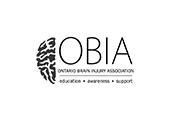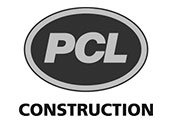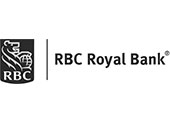Businesses today must be competitive, and profitable to be successful. To keep an organization cost-effective and productive, it must retain a dynamic team of highly motivated employees.
Beyond Recruitment: Effective Approaches to Retain Your High-Performing Team
The challenge is real and rests with organizations to retain positive and motivated employees. I’ve shared insightful strategies to accomplish this throughout this article.

Businesses must build high-performing teams from the ground up. Retaining successful teams is relatively easy, but the process must begin as employees are onboarded to their positions. Along with an in-depth orientation to the organization, emotional intelligence (EI) training should be part of the team's ongoing development.
Developing Organizational Success
I am privileged to work with teams and individuals to strengthen their emotional intelligence. Team members with strong EI are self-aware and benefit from recognizing, understanding, and managing their feelings/emotions and, believe it or not, those of others. This ability helps them be more intuitive and develop lasting relationships. There are several more strategies I recommend to retain a high-performing team.
10 Strategies to Retain Employees and Increase Productivity
- Foster a positive work culture: Create an environment where employees feel valued, respected, and motivated. Encourage open communication, recognize achievements, and promote a healthy work-life balance.
- Offer competitive compensation and benefits: Ensure that your employees are fairly compensated for their work. Review and adjust salaries regularly, provide opportunities for bonuses or incentives, and offer comprehensive benefits packages.
- Provide growth and development opportunities: Invest in your employees' professional growth by offering training programs, workshops, and mentorship opportunities. Encourage them to set personal development goals and provide resources to achieve them.
- Offer flexible work arrangements: Consider implementing flexible work hours, remote work options, or compressed work weeks. Such arrangements can improve work-life balance and boost employee satisfaction.
- Establish clear goals and expectations: Clearly communicate organizational objectives and individual performance expectations. Set SMART (specific, measurable, attainable, relevant, and time-bound) goals to give employees a sense of purpose and direction.
- Encourage autonomy and empowerment: Give employees autonomy in decision-making, allowing them to take ownership of their work. Empower them to contribute ideas, innovate, and participate in decision-making.
- Recognize and reward achievements: Implement an effective employee recognition program to acknowledge and reward outstanding performance. Celebrate milestones, provide timely feedback, and offer opportunities for advancement or additional responsibilities.
- Foster teamwork and collaboration: Encourage a collaborative work environment by promoting teamwork and cross-functional projects. Implement tools and platforms that facilitate communication and knowledge sharing among team members.
- Prioritize work-life balance: Support work-life balance initiatives, such as flexible schedules, wellness programs, and time-off policies. Encourage employees to disconnect from work during non-working hours to prevent burnout.
- Conduct regular performance evaluations: Regularly review and provide constructive feedback on employee performance. Offer growth and improvement opportunities and promptly address any concerns or issues.
Building Trust is Vital
Additionally, building trust is vital to developing and maintaining strong relationships and is a critical component of a high-functioning team. Team members should not feel the need to protect themselves from each other. Instead, they should appreciate and tap into one another's skills and experiences. Working as a team becomes more manageable and effective when we use our emotional intelligence skills to build trusting relationships. Trust is the glue that holds teams together when faced with challenges and setbacks.
Develop a Mentorship Program
Never forget an organization's most incredible resource is its employees. Cultivating a mentorship program will undoubtedly lead to increased and sustainable for employee success. Such programs contribute to managing human resource challenges, including employee retention, succession planning, and the overall well-being of your organization's team.
An in-house mentorship program allows more experienced or knowledgeable employees to guide new or less experienced employees. This type of support builds both skills and teamwork. Offering mentorship opportunities and resources validates the organization's commitment to the entire team.
Lead your organization to success today by using these strategies to develop and retain a high-performing team. Remember that strengthening emotional intelligence across your organization is the tactic to achieve this. Furthermore, it forms the necessary foundation to impact everyone involved positively.
This article was originally published on May 11, 2019, and has been updated (July 2023).
More Motivational Reads Here »
Are you Emotionally Intelligent?
Sign up for Linda’s monthly tips to build your Emotional Intelligence and reduce Emotional Hijacking!

















